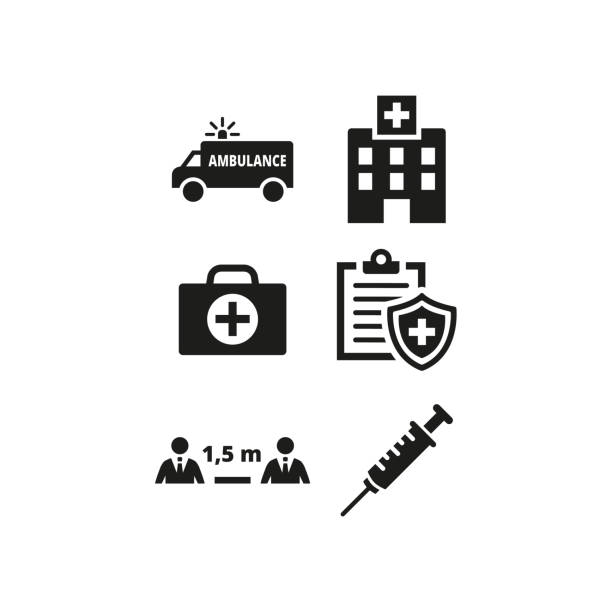Do you still have doubts about taking out vision insurance? You only have two eyes! We assure you that you will not hesitate after reading this article about the best vision insurance.
Why take out vision insurance?
Vision insurance allows you to pay for extensive eye exams and diagnoses, as well as timely detection and treat a series of hidden problems or conditions that, if treated on time, can save you so much money and avoid severe consequences.
You may think you’re covered by good health insurance, but just because you have a health insurance plan doesn’t mean you’re covered for eye exams and prescription glasses.
This lack of coverage would depend mainly on two factors: where your insurance comes from and the age of the person to be covered. The Affordable Care Act (ACA) mandate requires that if you receive your insurance under that scheme, your children up to 19 years of age are covered for vision benefits.
If you have an individual health policy or get your health insurance through your employer, you may not be covered for routine eye exams or glasses.
Typically, policies offered through your employer only cover vision problems if they are part of a work injury. You would have to purchase a separate policy to cover vision benefits.
Don’t be overwhelmed. Vision insurance is relatively inexpensive, and most have excellent coverage, even if you have a large family.
What is vision insurance?
Your primary health insurance plan would cover it if you sustained an eye injury due to an accident at work.
Vision insurance is a bit different. It is used to go to an optometrist or ophthalmologist for preventive and routine eye care. Vision insurance also covers vision repair surgeries, such as LASIK refractive surgery, which a traditional health insurance policy would not cover.
Without vision insurance, you can expect a routine eye exam to cost between $50 and $250. Your cost will depend on:
- If you visit an optometrist or ophthalmologist.
- If you go to a chain vision center or an independent doctor.
- Other tests are needed in addition to a routine exam.
- If you choose contact lenses or traditional glasses.
Please note that the fee is for the exam only. Frames and lenses can cost hundreds of dollars extra.
The national average is around $150 for frames and $90 for single vision lenses.
And remember: it does not include extras like progressive lenses, anti-reflective coating, or polycarbonate lenses to make them lighter.
Not having vision insurance can be expensive. Even if only two members of your family need glasses, that could easily cost the equivalent of a mortgage payment.
That’s why it’s crucial to have vision insurance coverage to help mitigate the expense when multiple family members need vision correction.
The average cost of vision insurance
Vision insurance is like health insurance in that when you buy a policy. It’s based on an annual premium that can be broken down into more affordable monthly payments. These premiums can vary depending on certain factors:
- Where did you buy it? The purchase of the policy through your employer, the private market, or the individual market will determine the amount of your premium.
- The place where you live. Like health insurance and auto insurance, premium amounts vary from state to state and from company to company.
- If your children are students, some companies require 18-25-year-olds to be enrolled full-time in college to be covered under a parent‘s policy.
individual vision insurance
Vision insurance can cost as little as $5 a month. Most are around $10 to $15 a month, translating to about $60 to $180 a year.
If you think about it, the annual premium for vision insurance is less than what it would cost to get an eye exam and buy glasses without insurance.
There are options to have additional coverages for an increased premium; Finally, we present details of the range later.
family vision insurance
Once the family status is achieved, the premium will, in some cases, not increase. This means that once you have two children, the third usually won’t affect your premium.
A family of four can expect to pay $40 to $80 a month in vision insurance premiums, depending on the level of coverage selected.
However, this amount is still less expensive than paying for only two family members who need corrective lenses.
What does vision insurance cover in the US?
Insurance companies that offer vision insurance often have different levels of coverage, often with names like “standard,” “basic,” “enhanced,” and “advanced.”
They differ in the premium amount, reflecting the type or amount of coverage available with the plan. Vision insurance generally has some level of coverage for the following:
- Eye exam: The insured is entitled to one eye exam per year. He will pay a copay between US$10 to US$20 for most insurers.
- Eyeglass frames: This benefit usually comes in the form of an allowance. Depending on the level of coverage, you can receive an allocation of US$120 up to US$220, a benefit that also applies once a year.
- Frame lenses: The lenses will benefit as a copay. Most are in the $25 to $50 range per year.
- Contact lenses: In the case of contact lenses, they can have 100% coverage or with a copay.
- LASIK Surgery: Most insurers offer a discount on this type of vision corrective surgery. The value varies from company to company but is generally around $500 to $1,000.
Other expanded services for vision insurance
Other vision insurance enhancements offered at a reduced rate may include:
- Scratch-resistant coating.
- Anti-glare coating.
- Polycarbonate lenses for stronger and thinner lenses.
- Transition lenses are those that turn into sunglasses when exposed to daylight.
- Progressive lenses are bifocals with no noticeable dividing line.
What is not covered by vision insurance in the US?
Like any insurance policy, there are specific exclusions or items that vision insurance does not cover.
Although the exclusions also vary by company. Be sure to ask about limitations and exclusions when you buy a policy. Some of the most common exclusions are:
- Additional exams beyond those done per year.
- Replacement of damaged or lost glasses unless appropriate warranty insurance is purchased.
- Charges for missed appointments, application fees, or other miscellaneous expenses.
- Non-prescription glasses, such as magnifying reading glasses.
- Any medical eye treatment. The employer’s eyemed health insurance policy must cover these injuries, surgeries, and treatments.
- Experimental or research procedures.
- Treatment in which the doctor is a member of the insured’s family.




